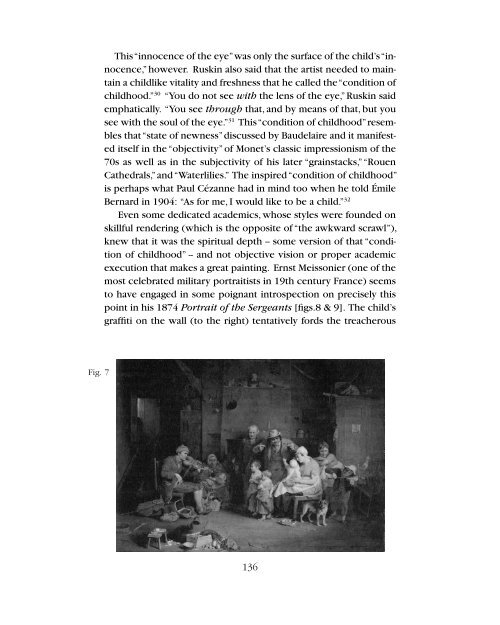Jonathan Fineberg – The Postman Did It – Children’s Art and the Avant-garde
Excerpt from “A Kid Could Do That!”, an extensive publication prepared by Galerie Gmurzynska on the occasion of the large-scale eponymous exhibition project at Art Basel Miami Beach 2014, conceived with Hollywood luminaries Baz Luhrmann and Catherine Martin.
Excerpt from “A Kid Could Do That!”, an extensive publication prepared by Galerie Gmurzynska on the occasion of the large-scale eponymous exhibition project at Art Basel Miami Beach 2014, conceived with Hollywood luminaries Baz Luhrmann and Catherine Martin.
- No tags were found...
Create successful ePaper yourself
Turn your PDF publications into a flip-book with our unique Google optimized e-Paper software.
This “innocence of <strong>the</strong> eye” was only <strong>the</strong> surface of <strong>the</strong> child’s “innocence,”<br />
however. Ruskin also said that <strong>the</strong> artist needed to maintain<br />
a childlike vitality <strong>and</strong> freshness that he called <strong>the</strong> “condition of<br />
childhood.” 30 “You do not see with <strong>the</strong> lens of <strong>the</strong> eye,” Ruskin said<br />
emphatically. “You see through that, <strong>and</strong> by means of that, but you<br />
see with <strong>the</strong> soul of <strong>the</strong> eye.” 31 This “condition of childhood” resembles<br />
that “state of newness” discussed by Baudelaire <strong>and</strong> it manifested<br />
itself in <strong>the</strong> “objectivity” of Monet’s classic impressionism of <strong>the</strong><br />
70s as well as in <strong>the</strong> subjectivity of his later “grainstacks,” “Rouen<br />
Ca<strong>the</strong>drals,” <strong>and</strong> “Waterlilies.” The inspired “condition of childhood”<br />
is perhaps what Paul Cézanne had in mind too when he told Émile<br />
Bernard in 1904: “As for me, I would like to be a child.” 32<br />
Even some dedicated academics, whose styles were founded on<br />
skillful rendering (which is <strong>the</strong> opposite of “<strong>the</strong> awkward scrawl”),<br />
knew that it was <strong>the</strong> spiritual depth -- some version of that “condition<br />
of childhood” -- <strong>and</strong> not objective vision or proper academic<br />
execution that makes a great painting. Ernst Meissonier (one of <strong>the</strong><br />
most celebrated military portraitists in 19th century France) seems<br />
to have engaged in some poignant introspection on precisely this<br />
point in his 1874 Portrait of <strong>the</strong> Sergeants [figs.8 & 9]. The child’s<br />
graffiti on <strong>the</strong> wall (to <strong>the</strong> right) tentatively fords <strong>the</strong> treacherous<br />
Fig. 7<br />
136

















